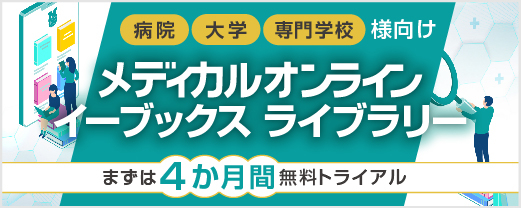アブストラクト
Japanese
| Title | 注意障害を伴うくも膜下出血患者に対して仮想現実技術を用いた介入により注意機能が改善した1例 |
|---|---|
| Subtitle | 症例報告 |
| Authors | 濱嶋真弘*1, 村川雄一朗*2,3, 大門恭平*1,4, 北村哲久*5, 石川秀雄*6 |
| Authors (kana) | |
| Organization | *1医療法人えいしん会岸和田リハビリテーション病院リハビリテーションセンター, *2国立循環器病研究センター循環器病リハビリテーション部, *3京都大学大学院医学研究科作業療法学講座, *4京都大学大学院人間・環境学研究科認知行動科学講座, *5大阪大学大学院医学系研究科社会医学講座環境医学教室, *6医療法人えいしん会岸和田リハビリテーション病院喀血・肺循環センター |
| Journal | The Japanese Journal of Rehabilitation Medicine |
| Volume | 58 |
| Number | 4 |
| Page | 450-457 |
| Year/Month | 2021 / 4 |
| Article | 報告 |
| Publisher | 日本リハビリテーション医学会 |
| Abstract | 「はじめに」注意機能は「必要な標的に着目して, 情報を処理, 入力, 出力する脳機能のプロセス」といわれている. Sohlbergによると, 注意機能には課題に集中し続けるための「持続性」, 多数の情報から必要な情報を選択するための「選択性」, あることから他のことに注意を切り替えるための「転換性」, 複数のことに同時に注意を向けるための「配分性」の4分類があるとされ, 臨床的にもこの分類に基づき整理されることが多い. これらの注意機能は, くも膜下出血や脳卒中, 頭部外傷などによる脳の器質的損傷などに起因して障害される. 注意障害は高次脳機能障害を有する患者の約80%に認められるとする報告もあり, 日常生活や社会生活, リハビリテーション治療の阻害要因となるため治療・改善が重要とされている. 主な治療法として, 机上での課題非特異的な訓練や課題指向型訓練, 環境調整などによる機能適応アプローチが存在するが, 特に重度の注意障害患者では環境調整や課題難易度調節による工夫を行ってもリハビリテーション治療の実施が困難な場合も多く, 重度注意障害患者へのアプローチ手法の確立は臨床的な課題である. |
| Practice | 医療技術 |
| Keywords | VR(virtual reality), 環境調整(environmental adjustment), 高次脳機能障害(higher brain dysfunction), 脳卒中(stroke), 理学療法(physical therapy) |
English
| Title | A Case of Attention Deficit in a Patient with Subarachnoid Hemorrhage which was Successfully Treated by Virtual Reality-Guided Rehabilitation |
|---|---|
| Subtitle | |
| Authors | Masahiro Hamashima*1, Yuichiro Murakawa*2,3, Kyohei Omon*1,4, Tetsuhisa Kitamura*5, Hideo Ishikawa*6 |
| Authors (kana) | |
| Organization | *1Rehabilitation Center, Eishinkai Kishiwada Rehabilitation Hospital, *2Department of Cerebral and Cardiovascular Rehabilitation, National Cerebral and Cardiovascular Center, *3Division of Occupational Therapy, Graduate School of Medicine, Kyoto University, *4Department of Cognitive Behavioral Science, Kyoto University Graduate School of Human and Environmental Studies, *5Division of Environmental Medicine and Population Sciences, Department of Social and Environmental Medicine, Osaka University Graduate School of Medicine, *6Hemoptysis and Pulmonary Circulation Center, Eishinkai Kishiwada Rehabilitation Hospital |
| Journal | The Japanese Journal of Rehabilitation Medicine |
| Volume | 58 |
| Number | 4 |
| Page | 450-457 |
| Year/Month | 2021 / 4 |
| Article | Report |
| Publisher | The Japanese Association of Rehabilitation Medicine |
| Abstract | [Abstract] Objective:It is often difficult to provide effective functional training in patients with severe attention deficit caused by organic damage to the brain. Herein, we report a case of attention deficit in a patient with subarachnoid hemorrhage, which was successfully treated by virtual reality(VR)-guided rehabilitation. Methods:A 71-year-old woman was transferred to our hospital for rehabilitation after a subarachnoid hemorrhage. The patient suffered from severe attention deficit. She was unable to follow instructions from therapists and was unable to concentrate on rehabilitation tasks. We attempted VR-guided rehabilitation using mediVR KAGURA(mediVR, Toyonaka, Japan)in order to improve her attention deficit. The training was performed approximately 20 min every weekday, for 4 months in a 360-degree VR environment, with no background image initially. The difficulties in physical and cognitive tasks were adjusted by focusing on the size, range of appearance, and falling speed of each task object, so that even patients with severe attention deficit could respond to these tasks appropriately. Results:After the above-mentioned VR-guided training, the trail making test A, behavioral inattention test, and moss attention rating scale were improved from 300 s(could not complete the test)to 100 s, 119 to 133, and 55 to 98, respectively. In addition, in the clinical assessment for attention, the time required for visual obliteration tests was significantly shortened, and clinical symptoms associated with attention deficit were also improved clinically. Conclusion:VR-guided rehabilitation has the potential to be used as a new therapeutic approach to improve attention deficit. |
| Practice | Medical technology |
| Keywords | virtual reality, environmental adjustment, higher brain dysfunction, stroke, physical therapy |
- 全文ダウンロード: 従量制、基本料金制の方共に770円(税込) です。
参考文献
- 1) 豊倉 穣:注意障害の臨床. 高次脳機能研究 2008;28:320-328
- 2) Sohlberg MM, Mateer CA:Effectiveness of an attention-training program. J Clin Exp Neuropsy-chol 1987;9:117-130
- 3) 国立身体障害者リハビリテーションセンター:平成17年度高次脳機能障害者支援モデル事業実施報告. 2006;pp14-24
- 4) van Zomeren AH, Brouwer WH, Deelman BG:Attentional deficits:The riddles of selectivity, speed and alertness. Closed Head Injury, Psycholog-ical, Social and Family Consequences(ed by Brooks DN). Oxford University Press, 1984,pp74-107
- 5) Moreno A, Wall KJ, Thangavelu K, Craven L, Ward E, Dissanayaka NN:A systematic review of the use of virtual reality and its effects on cognition in individuals with neurocognitive disorders. Alzheimers Dement(N Y) 2019;5:834-850
残りの7件を表示する
- 6) Ge S, Zhu Z, Wu B, McConnell ES:Technology-based cognitive training and rehabilitation interven-tions for individuals with mild cognitive impair-ment:a systematic review. BMC Geriatr 2018;18:213
- 7) Hara M, Kitamura T, Murakawa Y, Shimba K, Yamaguchi S, Tamaki M:Safety and feasibility of dual-task rehabilitation program for body trunk balance using virtual reality and three-dimensional tracking technologies. Prog Rehabil Med 2018;3:20180016
- 8) Omon K, Hara M, Ishikawa H:Virtual reality-guided dual-task body trunk balance training in a sitting position improved walking ability without improving leg strength. Prog Rehabil Med 2019;4:20190011
- 9) Bowen A, James M, Young G:National Clinical Guideline for Stroke 5th edition. Royal College of Physician, 2016;pp60-62
- 10) Wulf G, Shea C, Lewthwaite R:Motor skill learning and performance:a review of influential factors. Med Educ 2010;44:75-84
- 11) Wulf G, Lewthwaite R:Optimizing performance through intrinsic motivation and attention for learning:The OPTIMAL theory of motor learning. Psychon Bull Rev 2016;23:1382-1414
- 12) 道免和久 編:ニューロリハビリテーション. 医学書院, 東京, 2015;p309


